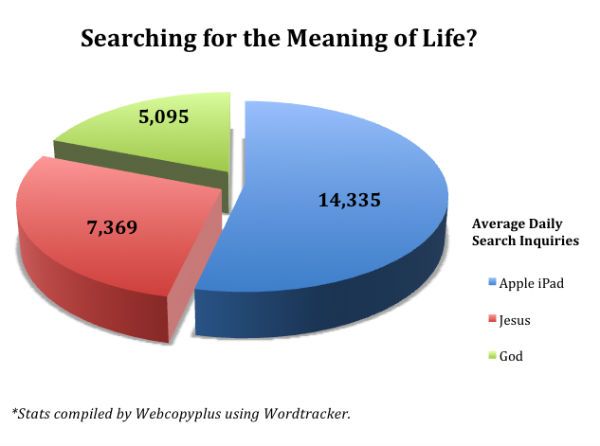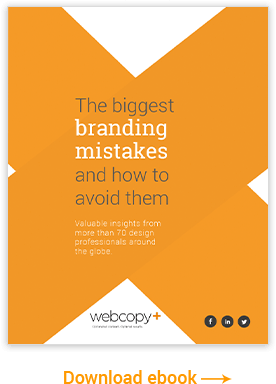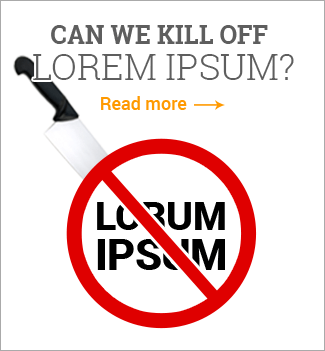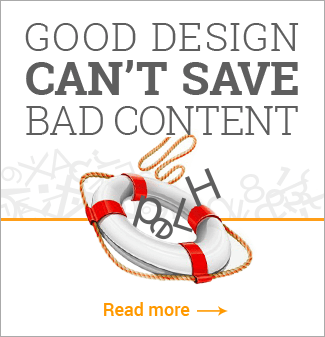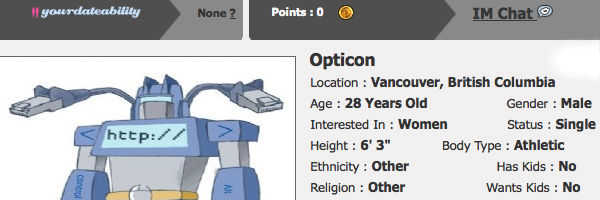
Between scouring the Internet for bad content and stunt doubling for Optimus Prime, I don’t get much time to chat with the ladies in real time, so what’s a web marketing superhero to do? Megan Fox isn’t taking my calls, so it’s time to try online dating. What can I write in my dating profile so I can be sure to maximize my ROI?
Continue reading →

Due to the subjective nature of copywriting and design, copywriters and designers have difficult jobs. They get hired for their expertise, tap into their knowledge and experience, and propose a draft. When the response is positive, fantastic. But when businesses offer vague critiques such as, “I don’t like it,” that’s absolutely meaningless, setting the stage for unnecessary frustration, countless revisions, and wasted time for all parties involved.
When you hire with a copywriter or designer, you can eliminate misunderstandings, and achieve effective web copy or design without delays, by following these basic feedback guidelines.
Continue reading →

Journalists are increasingly turning to the Web to generate story ideas, gather information and source subject matter experts. If you’ve done a good job building your brand online, that expert could be you.
Continue reading →

The Virtual Miss Friday website states: Professional online business services. While the site looks professional — and the services probably are, too — it fails to treat visitors with respect. Three pop-ups. Three!
Continue reading →

Every element on your website has the ability to build — or damage — how visitors perceive you. To gain insight on how to generate confidence, earn trust, and entice visitors to reach out and invest in your offerings, we asked website professionals:
What are common website mistakes that decrease confidence, trust and sales?
Continue reading →

Online visitors form a first impression of a website quicker than the blink of an eye — literally. It typically takes humans 300 to 400 milliseconds to blink. Meanwhile, scientific research led by Dr. Gitte Lindgaard at Carleton University in Ontario reveals websites have as little as 50 milliseconds to establish a first impression — a mere 1/20th of a second. That’s it!
This is crucial information for any business because once a visitor forms an impression on a subconscious level, he or she will selectively search for information confirming that impression. People do this because we all want to prove we have good judgement. So, if our first impression of a website is negative, we have a tendency to mainly seek and see the negatives, regardless how good a business’ products and services might actually be. Alternatively, if we immediately like what we see, we’ll look for positive information to reinforce that impression.
So how do you avoid making a bad first impression on the Web? Easy. Get a good designer.
Continue reading →

If English weren’t an evolving language, we’d still be satisfying our retail needs at ‘Ye Olde Shoppes’ and referring to our less intelligent peers as ‘unpregnant’. Many factors contribute to the evolution of language, including geography, culture, and technology — but what determines the changes that are deemed acceptable enough for purists to relent?
Continue reading →

Adding a blog to your website is a simple and affordable way to strengthen your connection with both current and potential clients, while improving your search engine rankings. However, many business blogs quickly become neglected and abandoned, which leaves a poor impression. So we asked successful bloggers and online marketing experts:
When should a business launch a blog, and how do you create a following?
Continue reading →

Consumers are going mobile, and fast. If your business isn’t, it could be missing out on potential revenue from the increasing number of consumers using their phones to decide where to direct their spending.
Continue reading →
![]()




